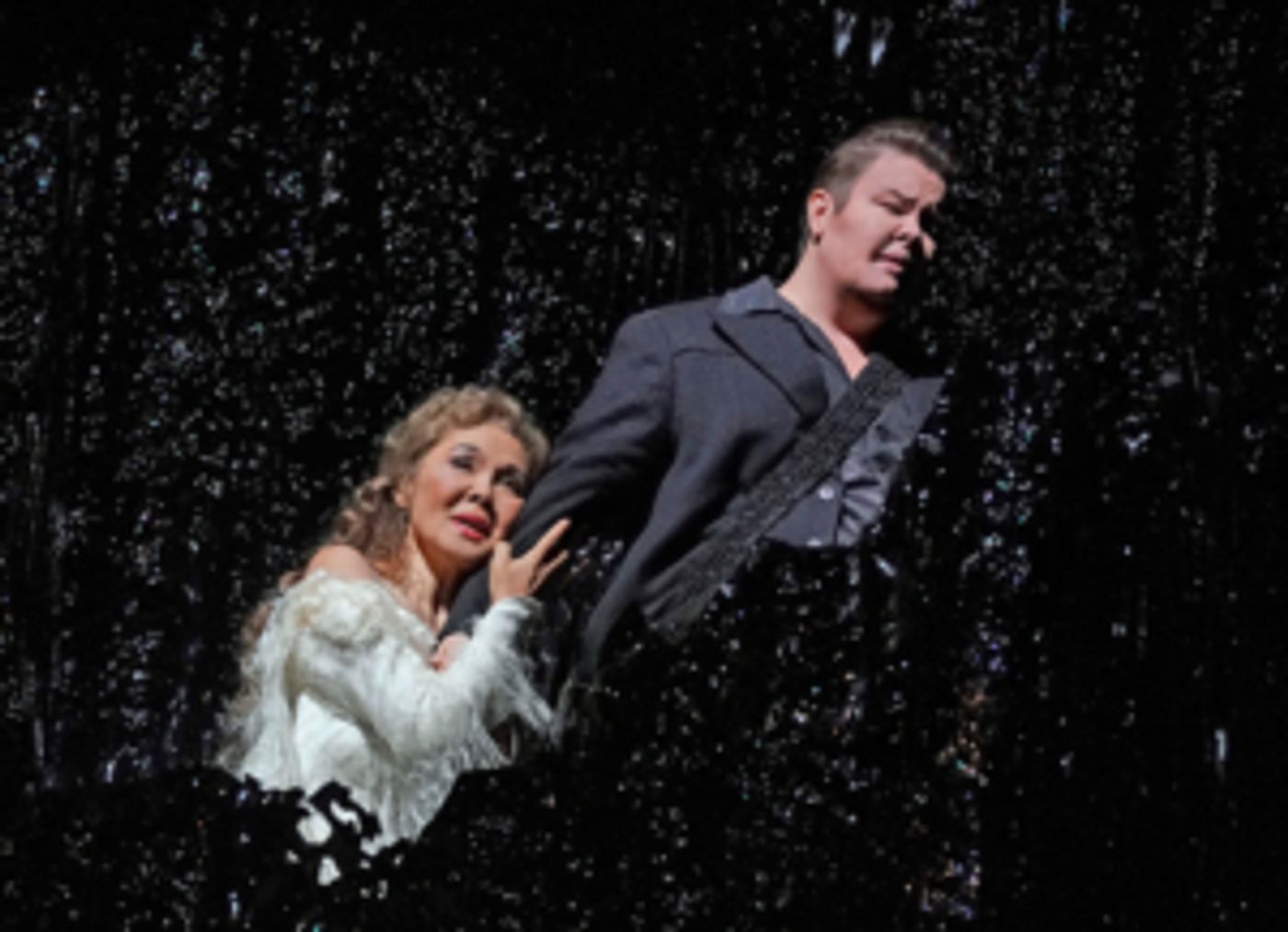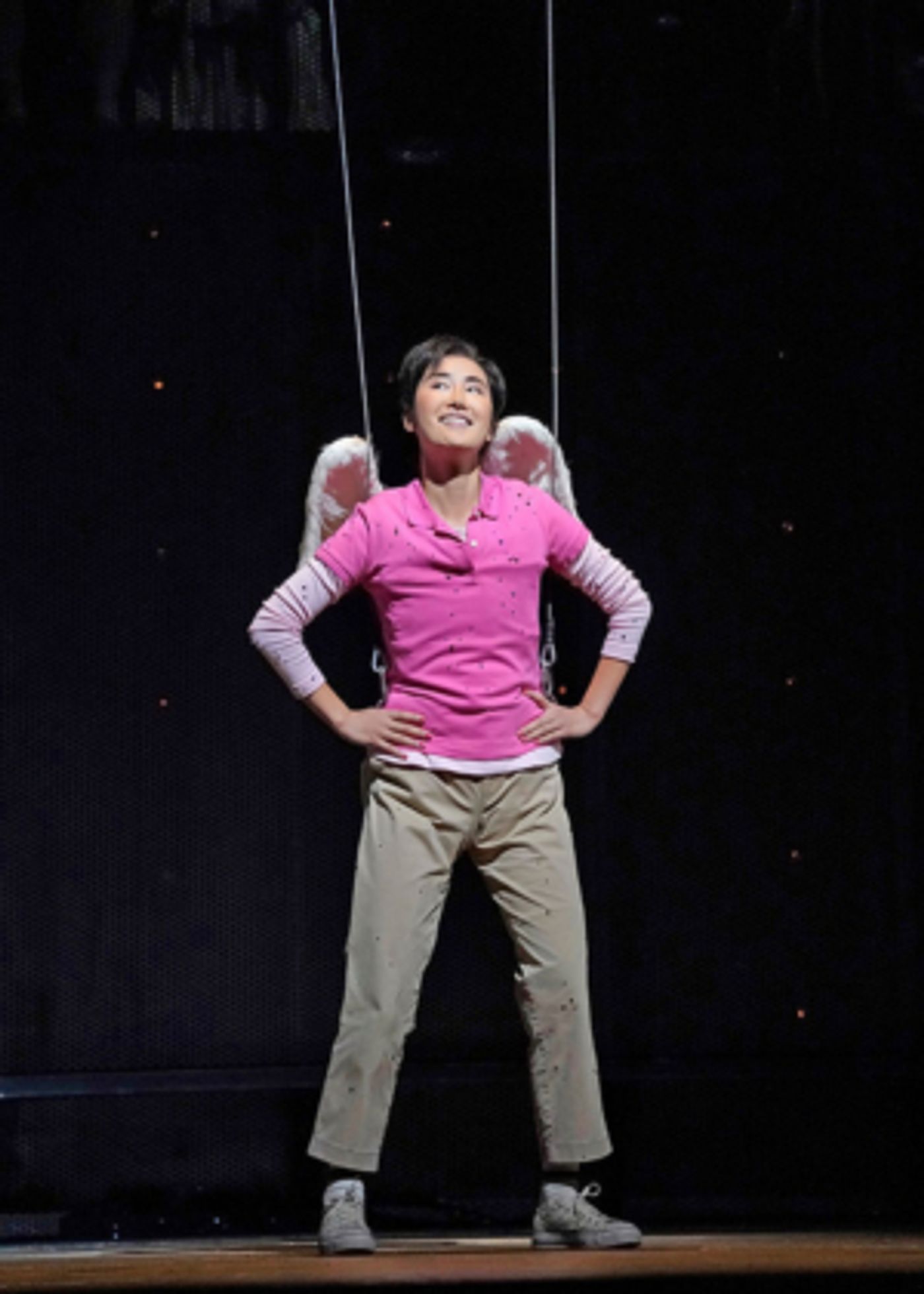Review: Jamie Barton Shines in All-Singing, All-Dancing Gluck ORFEO from Mark Morris at the Met

Ken Howard/Met Opera
With apologies to Gluck, "Che faremmo senza Jamie Barton?"-"Where would we be without mezzo Jamie Barton?"--in the revival of Mark Morris's production of ORFEO ED EURIDICE at the Met, under Mark Wigglesworth's firmly rhythmic baton.
ORFEO, written in the mid-18th century, was an opera of a different stripe for its time. (The Met uses the 1762 Vienna version, one of many.) It leans heavily on dance and choral singing, as well as recitative (Dan Saunders was on harpsichord here).
Gluck attempted to change the language of opera seria--six characters, usually extremely elaborate arias plus singing ensemble--which he found inflexible, and worked with the Italian poet Ranieri de' Calzabigi here as librettist to make a difference. The writer was much influenced by the French style of drama and shared Gluck's desire to change the parameters of musical theatre.

Ken Howard/Met Opera
Barton, who has shown herself to be indispensable in repertoire from Bellini to Wagner to Heggie, took on her first title role, and pants role, at the Met and showed her breadth of her vitality as a singer (along with the velvet in her voice). This included her golden rendition of the opera's most famous aria, alluded to in the first paragraph, "Che faro senza Euridice?" in which Orfeo bemoans the loss, forever it seems, of his spouse.
In this performance, Barton was at her particular best when she had the right partner; in this case, it was Hera Hyesang Park. I first admired this singer's sweet, delectable soprano when she was still at Juilliard, particularly as Amina in LA SONNAMBULA, and was pleased when she made the leap across 65th Street to the Met.

Ken Howard/Met Opera
Unfortunately, Park didn't sing the role of Orfeo's beloved--who he rescues from the underworld (the Greek mythological equivalent of paradise) to return her to her land of the living--but the tertiary role of Amore. (There are just three singing solo roles in the opera.) This the god of love--a charming character in the rendering here--tells Orfeo that Jove will allow him to bring Euridice home to Earth, but only under certain conditions: First, he may not look at her until they end their journey and, second, he may not tell her why he is acting so distantly.

Ken Howard/Met Opera
Where does that leave Euridice? In the hands of soprano Hei-Kyung Hong, who, alas, was a pale vocal presence at least at the performance on Thursday night, and dramatically annoying as she tried to get Orfeo to explain his behavior. Finally, Orfeo has had enough of his wife's hocking a chinik and turns to look at her--at which point she dies and is carried back to the underworld by the local undertakers, the shades. (I for one was relieved.)
About to take his own life after losing Euridice once again, Orfeo is not simply saved by Amore but has his wife restored to life as well, allowing them to continue their journey back to Earth. To me, the interaction between Orfeo and Euridice was where the scenic design, a revolving unit set by Allen Moyer, worked (and looked) best, as their crossing back to the land of the living began, was thwarted, and finally succeeded.
Otherwise, the sets seemed odd, to say the least, I assume following the lead of director/choreographer Morris. His concept set the stage as if the chorus (dressed as heroic figures from various stages in history who would be interred in the Elysian Fields, by Isaac Mizrahi) were spectators in the "Dance at the Gym" from WEST SIDE STORY. Luckily, the Met's rank and file, whose presence is highlighted in Moyer's design, was in great voice (at Thursday's performance) and one would hope that Gluck would have been quite happy with the results, even if he was puzzled by the setting.
The choreography by Morris for his dancers was certainly lively and they were in fine form, though it seemed like they might have been more at home across Lincoln Center Plaza at City Ballet. It's a pity that he couldn't come up with more movement for the three main singers, other than dangle Amore like a puppet.
Additional performances of ORFEO ED EURIDICE will take place on October 29; November 1, 4, 7 and the matinee on November 10. A complete schedule with casting by date and performance times is available on the Met's website.
Reader Reviews
Videos

